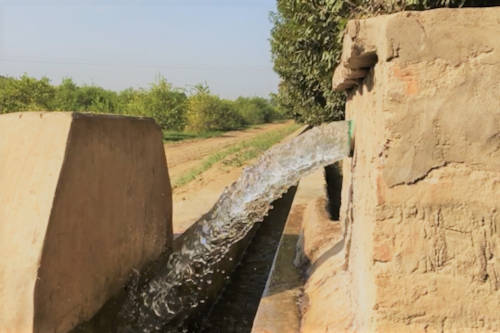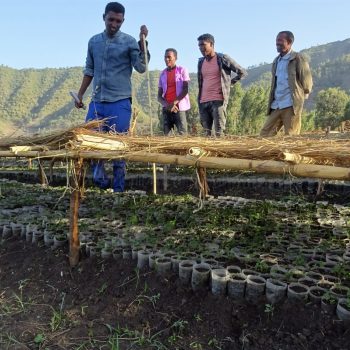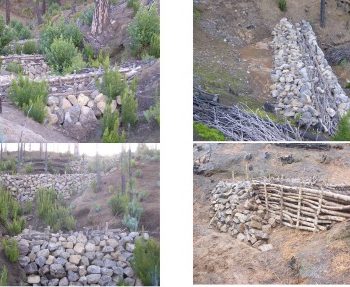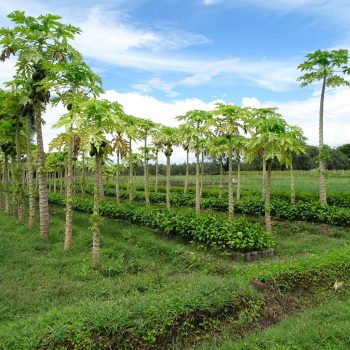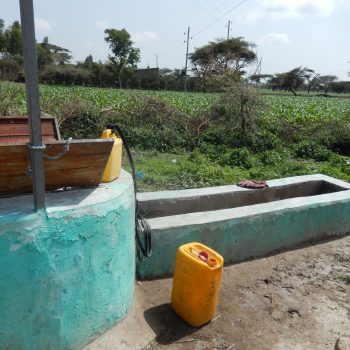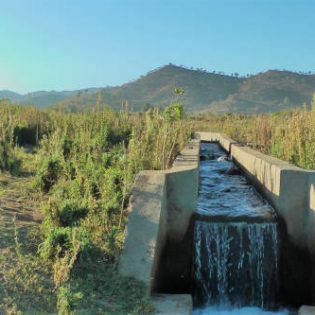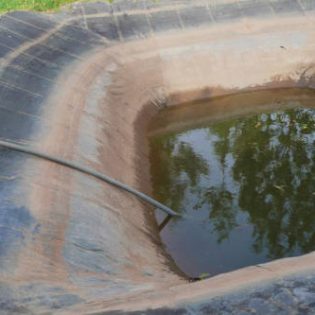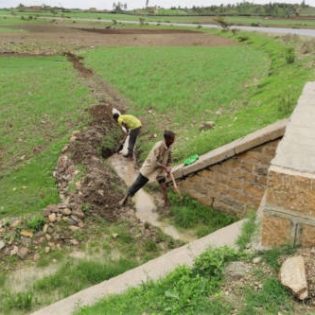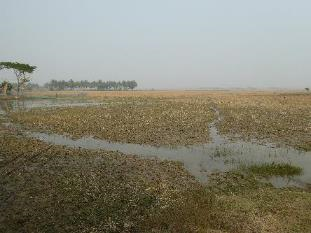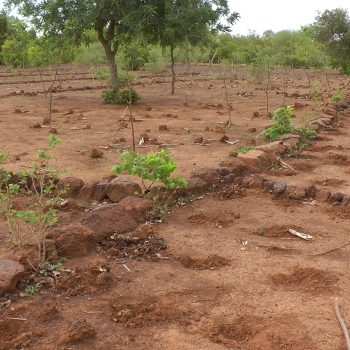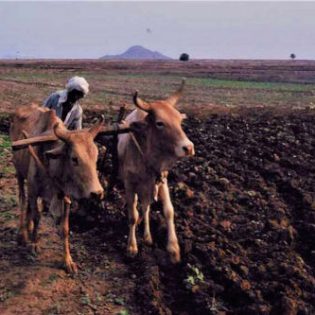| Conjunctive use of surface and groundwater consists of combining the use of both sources of water in order to minimize the undesirable physical, environmental and economic effects of utilisation of each source and to optimize the water demand/supply balance (FAO, 1995). In many the application of conjunctive uses systems is not planned beforehand, but in practice it is implemented as the result of water deliveries falling short in quantity and timing and where drainage is failing or not present. In these cases, farmers, complement the shortage with the exploitation of groundwater resources.
In Pakistan, less than 50% of water applied in various large-scale irrigation commands comes from the canal system, the rest coming from groundwater wells. Conjunctive use of groundwater irrigation has developed widely in numerous irrigation-canal commands, usually on a spontaneous basis but sometimes encouraged by government subsidy. In part these measures were taken to overcome drainage challenges but also considering the strained surface water deliveries and dilapidated systems based on the re-use of canal seepage. The following benefits have been the driving force for spontaneous conjunctive use of shallow aquifers in irrigation-canal commands worldwide (Foster & van Steenbergen, 2011): (1) much greater water-supply security—by taking advantage of natural aquifer storage, (2) larger net water-supply yield than would generally be possible using one source alone, (3) better timing of irrigation-water delivery—since groundwater can be rapidly deployed to compensate for any shortfall in canal-water availability at critical times for crop growth, (4) reduced environmental impact—by reducing water-logging and salinisation of agricultural land, and restoring aquifers and river-flow (baseflow) Important to consider is that the institutional dimension of conjunctive use management is significantly more complex than where surface water or groundwater alone is the predominant water-supply source. Therefore, it is important for surface water managers and groundwater managers (hydrogeologists) to consider facilitating these systems institutionally besides also supporting local initiatives that showcase the potential. This spontaneous conjunctive use usually arises in situations where canal-based irrigation commands are: (1) tied to rigid canal-water delivery schedules and unable to respond to crop needs; (2) over-stretched with respect to surface-water availability for dry season diversion (3) inadequately maintained and unable to sustain design flows throughout the system, and (4) poorly administered, allowing unauthorized or excessive off-takes Whereas conjunctive water use in existing crop lands can distinctly improve crop performance and sustainability of cropping areas (water buffering and soils improvement); the systems may lead to cater expansion of agricultural land as farmers in the Rio Dulce irrigation system in Argentina did resort to. Due to rigid water delivery schedules and the underperformance of the canal systems farmers in reacted by developing a new source ‘groundwater form a (tube)well’, thereby gaining independence of the system to expand to high-value drip irrigated agriculture (Borghuis, 2017).
|
Additional information
| Agriculture | Irrigated |
|---|
